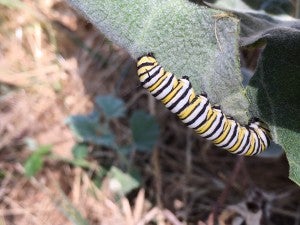
Audrey applies the Habitat Quantification Tool to a potential restoration site, counting the number of milkweed and wildflower stems within a transect.
This spring, my colleagues and I visited three ranches in Texas to begin piloting the Monarch Butterfly Habitat Exchange, an emerging program that will help agricultural landowners contribute to monarch recovery.
Elm Ridge Ranch, Wagley Ranch and Shield Ranch will be among the first restoration projects conducted this year to improve ranchlands and create valuable monarch habitat. We will continue to work closely with these landowners to hone the program and ensure it works for monarchs, pollinators and people alike.
Already, we’ve had the opportunity to gain valuable insights, including how to improve habitat quantification and how to inspire enrollment.










